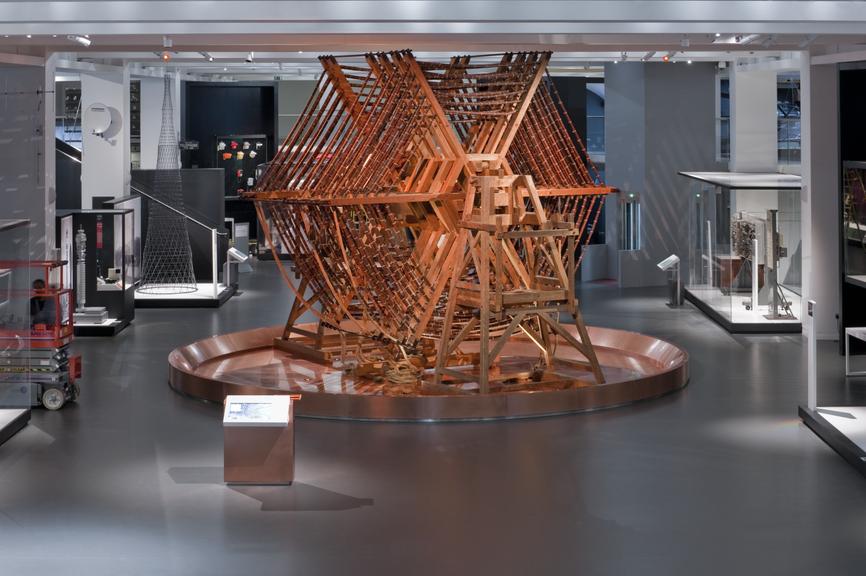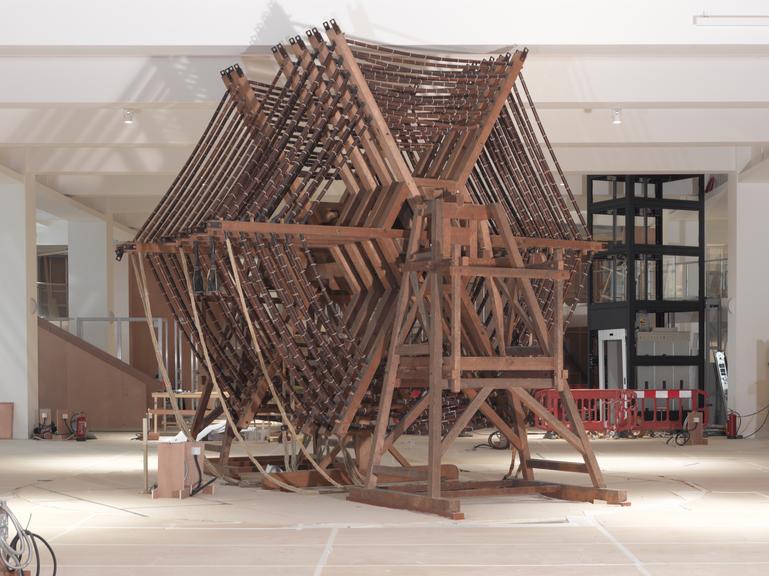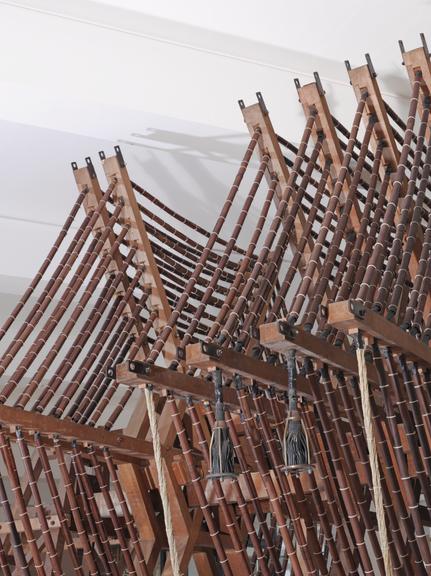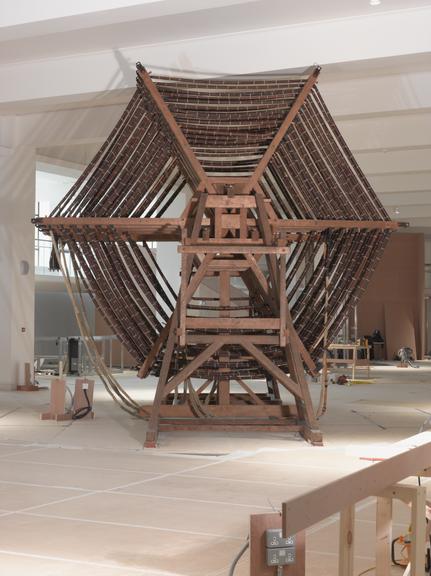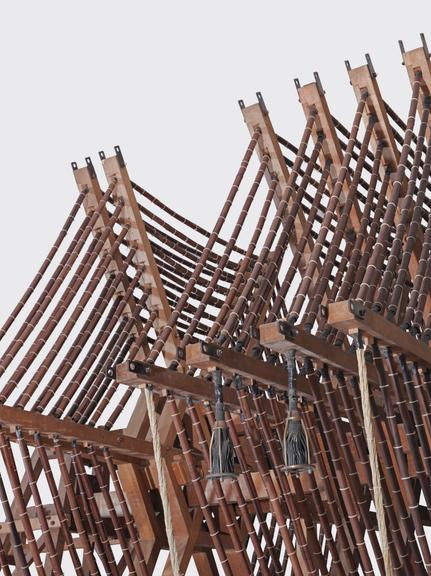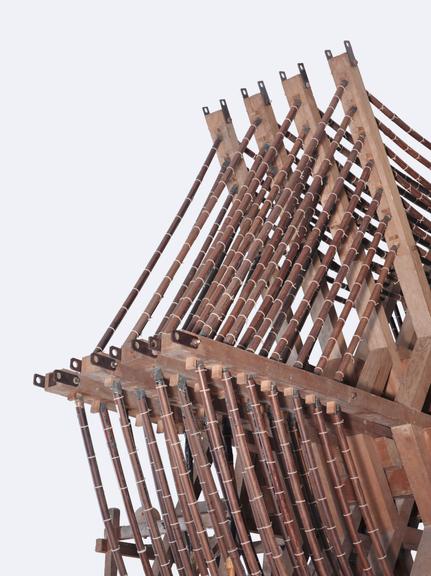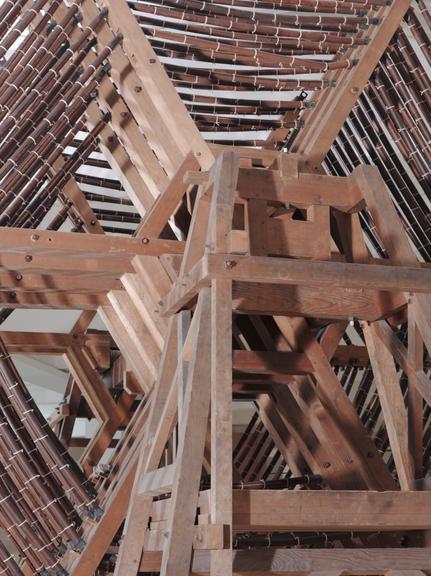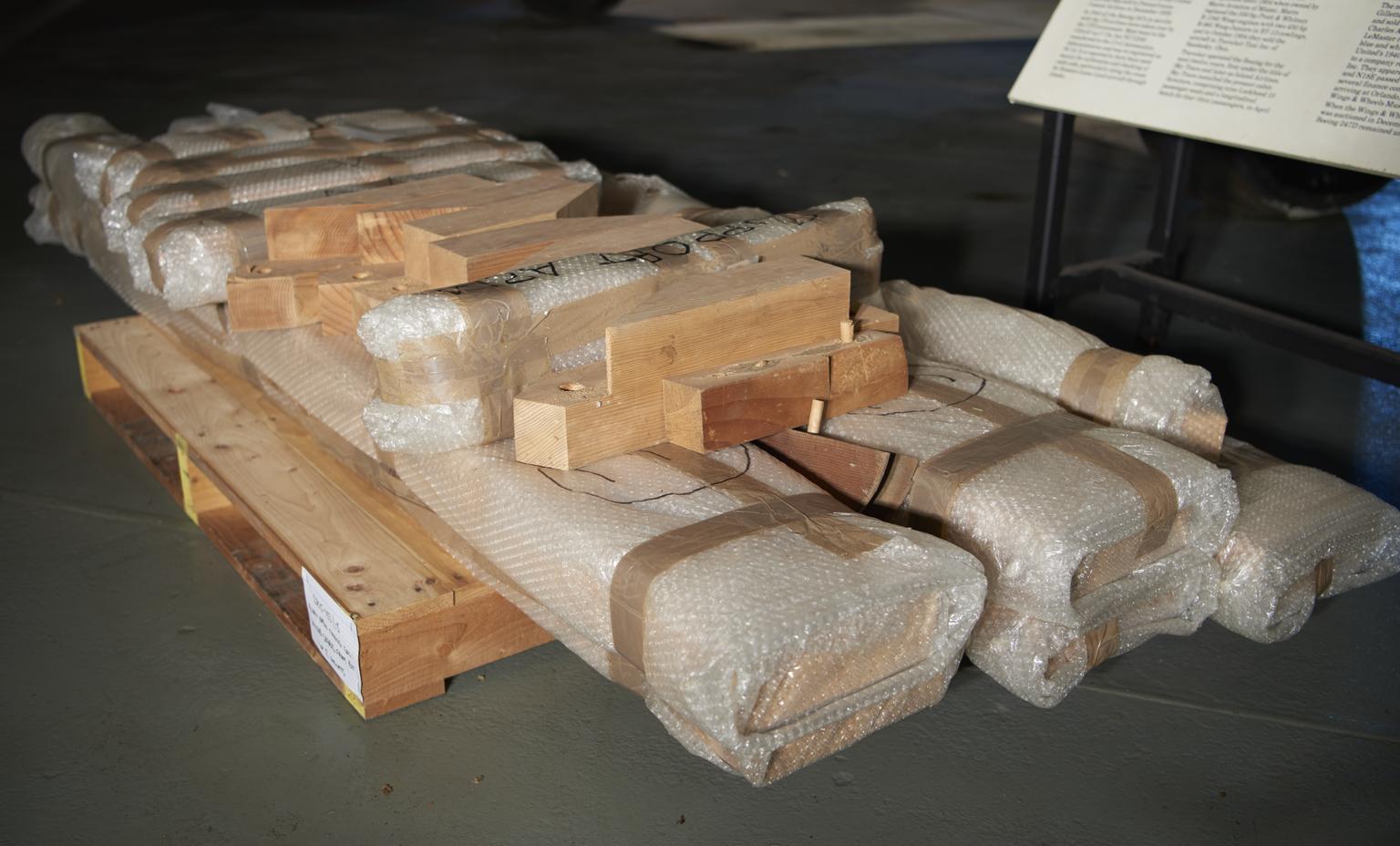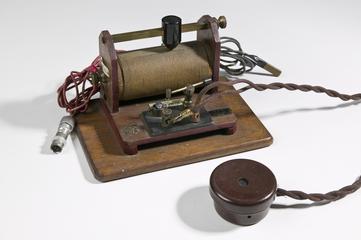Aerial tuning inductor from the Rugby Radio Station, 1943-1966
Variable inductance coil for tuning the aerial of the very-low-frequency (16 kHz) transmitter (callsign GBR) installed at Rugby Radio Station, unknown maker, British, 1943-1966. Constructed in 1943 to the original 1926 design, and as modified in 1966, together with separate transformer and variometer with supporting framework.
1. Former or framework - made of wood (Sitka Spruce). 2. Fixings - made of wooden doweling and nylon nuts & bolts. 3. Wedges to keep coil in place - made of wood. 4. Tap point connections and cable terminals - made of metal. 5. Outer support tubing/casing of coil windings - made of synthetic-resin-bonded-paper. 6. Inner of Litz cable - made of enamelled copper wire.
More
Aerial tuning inductor from the of the very-low-frequency (16 kHz) transmitter (callsign GBR) installed at Rugby Radio Station, unknown maker, British, 1943-1966. Constructed in 1943 to the original 1926 design, and as modified in 1966, together with separate transformer and variometer with supporting framework..
The Rugby Tuning Coil was used to tune antenna to the right frequency at the Rugby Radio Station. When in began service on January 1 1926. the Rugby station was the most powerful in the world. In 1926, the Rugby tuning coil transmitted the "British Official Wireless News Messages" to the Empire and to ships on all the seas. This was the first time this have been possible. In 1928, it was used to send a message to Mars at the request of Dr Mansfield Robinson, a London lawyer, who believed that he had been in contact with Mars. The Post Office accepted it as a commercial transaction – Dr Robinson was charged 1s 6d per word, the same as a standard message. The coil was also used to transmit secret information to ships and submarines during the Cold War. The coil was decommissioned in 2003.
- Measurements:
-
overall: 10000 mm x 10000 mm x 6000 mm, ,
- Materials:
- metal (unknown) , synthetic-resin-bonded-paper , copper (metal) , Sitka spruce (wood) , nylon and wood (unidentified)
- Object Number:
- 2005-733/1
- type:
- radio transmitter
- Image ©
- The Board of Trustees of the Science Museum

























